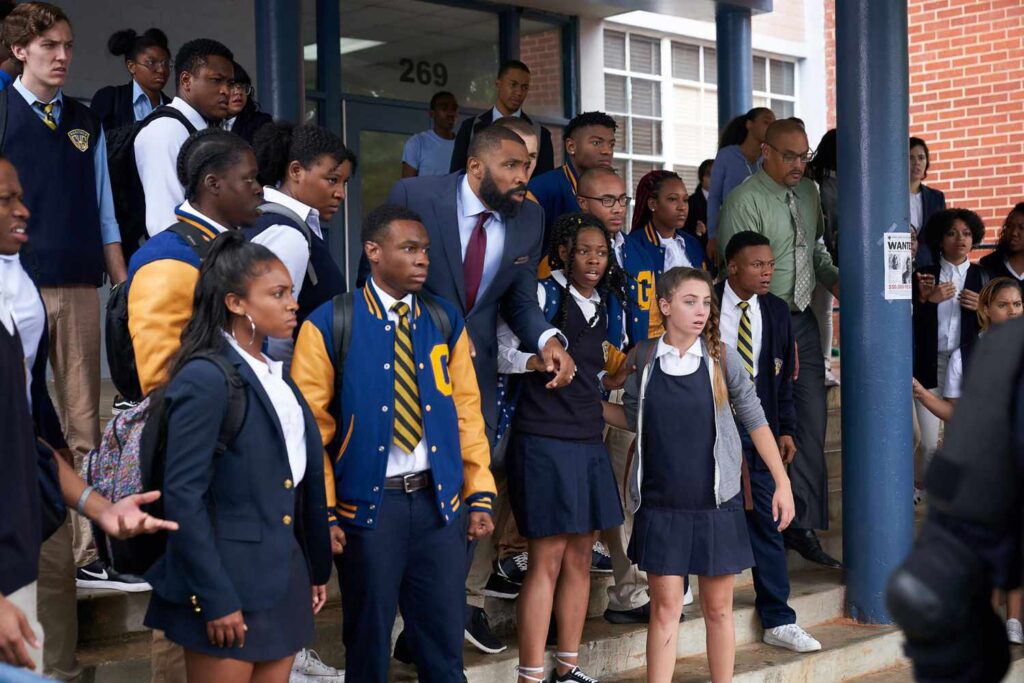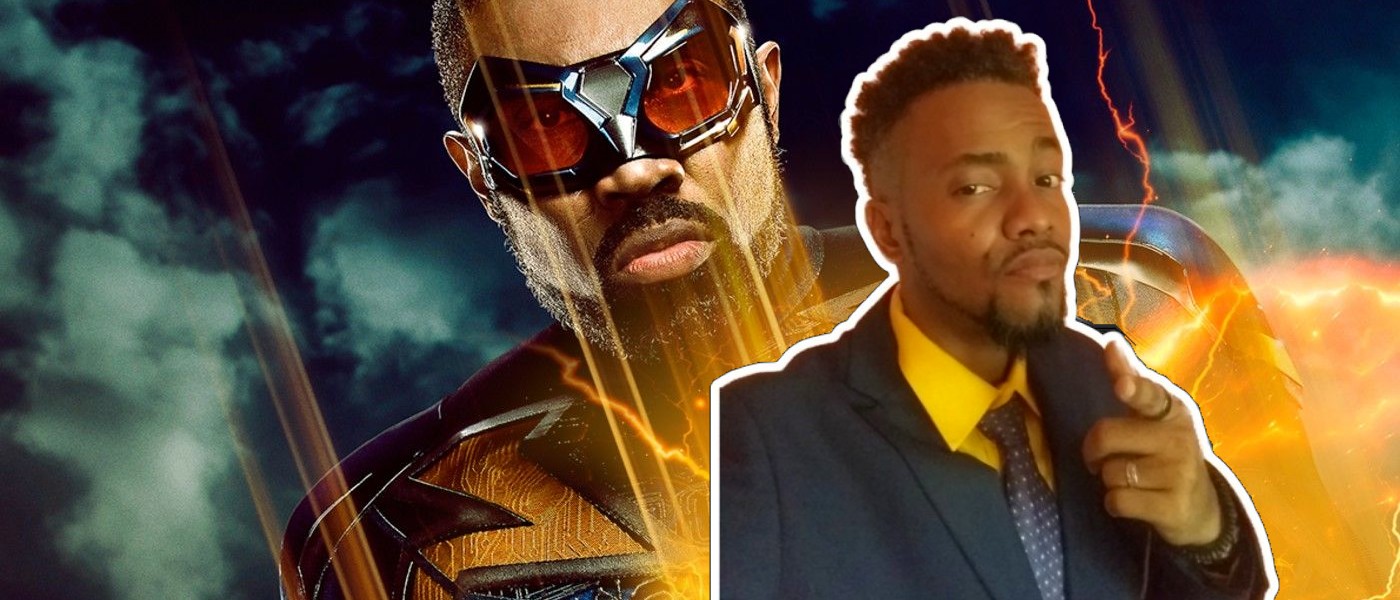A Hero with Chalk and Lightning
In a world of flashy suits, alien powers, and billion-dollar tech, one of the most potent superheroes in the DC Universe wields an identity grounded not in science fiction, but in reality: Jefferson Pierce, a teacher, a principal, a father, and yes, a hero known to most as Black Lightning. What makes Jefferson unique is not just his ability to generate electrical blasts—but his unwavering belief that education is the real superpower.
As both a college professor and counselor, I find Jefferson Pierce’s dual role as educator and superhero incredibly significant. His journey speaks volumes about the transformative impact of teachers—particularly Black male educators—on students, communities, and the fight for justice.
A Teacher First: Jefferson Pierce in Comics and on Screen
Created by Tony Isabella and Trevor Von Eeden in 1977, Black Lightning emerged as DC’s first major Black superhero with his own title. From the beginning, Jefferson Pierce was written not just as a fighter of crime but as a man of principle, deeply embedded in his community. Raised in Suicide Slum, he returned to his neighborhood not to escape its challenges, but to confront them—first through teaching, and later through heroism.
In The CW’s television adaptation (Black Lightning, 2018–2021), Jefferson’s role as principal of Garfield High is central. Before he ever dons his suit, he is already a mentor, protector, and visionary. This reinforces a key message: teachers change lives long before they change the world.
The Classroom as a Battlefield for Justice
Jefferson’s school is not a safe haven from the world—it is a microcosm of it. Drugs, gang violence, poverty, and systemic racism threaten the lives of his students. As both teacher and principal, he acts not just as a disciplinarian but as a healer and guide.
In the language of Brazilian educator Paulo Freire (1970), Jefferson practices what might be called pedagogy of the oppressed. He empowers students to question the conditions of their oppression, to find their voices, and to act with purpose. Rather than banking facts into passive learners, he builds critical thinkers and agents of change.
This is more than good teaching—it is revolutionary. bell hooks (1994) calls this “education as the practice of freedom.” Jefferson Pierce lives this. In both his identities, he models strength through knowledge and compassion.
Black Male Educators: Representation and Responsibility
In both the comics and television show, Jefferson’s presence as a Black male educator is deeply symbolic. In the real world, Black male teachers make up less than 2% of the U.S. teaching force (Goings & Bianco, 2016). Yet their impact is profound. Research consistently shows that Black students—particularly Black boys—benefit significantly from having Black male role models in the classroom (Egalite, Kisida, & Winters, 2015).
Jefferson stands in that gap. He offers affirmation, discipline, cultural pride, and emotional availability—traits often denied to Black men in public narratives. His presence challenges harmful stereotypes and affirms the holistic potential of Black masculinity.

Moreover, his character illustrates how Black male educators are often not just seen as instructors but as father figures, mentors, and community leaders. In many under-resourced communities, the local teacher or principal may be one of the few stable and consistent adult male figures in a child’s life. Jefferson embraces this responsibility with humility and commitment, recognizing that teaching extends beyond academics to character, resilience, and cultural pride.
In both versions of the character, Jefferson actively builds a bridge between education and advocacy. He is not content to simply exist within a broken system; he seeks to change it from within. This mirrors the lived experiences of many real-life Black male educators who navigate the dual pressures of professional expectations and communal accountability. They are expected to lead, discipline, uplift, and advocate—all while fighting implicit bias, resource gaps, and systemic inequity.
Furthermore, Jefferson’s willingness to confront school boards, challenge police overreach, and engage parents underscores the political nature of teaching—particularly for educators of color. Teaching, in his hands, becomes a form of activism. It is through this activism that Black male educators like him push back against narratives of inferiority, asserting instead the brilliance, potential, and dignity of their students.
This layered representation is rare in mainstream media. Jefferson Pierce, as Black Lightning, reminds us that representation is not just about being seen—it’s about being seen doing the work that matters. And in classrooms across the country, Black male educators are doing precisely that: transforming futures one lesson at a time.
Trauma, Healing, and the Emotional Labor of Teaching
As a counselor, I’m also drawn to the emotional weight Jefferson carries. He does not simply teach; he absorbs pain. He consoles grieving parents, de-escalates tensions, and absorbs the trauma of systemic violence. He embodies what scholars like Patricia Jennings (2015) call the emotional labor of teaching.
This aspect of Jefferson’s character is especially important in communities where schools are often sites of surveillance and punishment rather than empowerment. His ability to see students as whole human beings—capable of growth, grief, joy, and complexity—reminds us that teaching is not just about instruction, but about affirmation and healing.
The Hero in the Hallways: Power Without the Suit
Unlike many superheroes, Jefferson does not rely on his powers to change the world. His students don’t need Black Lightning—they need Mr. Pierce. In several key episodes of the CW show, it is not lightning bolts but well-timed words, tough love, and unconditional belief that save the day.
One of the most powerful scenes in the series occurs when a student contemplates suicide. Jefferson talks him down not with heroics, but with empathy. He listens, affirms the student’s pain, and provides hope. This is what real heroes do. They see the unseen.
The classroom is where Jefferson is perhaps most heroic—where he channels years of mentorship, resilience, and principled leadership into real-time transformation. Unlike a villain battle, the stakes in the classroom are not dramatic or immediate, but long-term and deeply personal. He teaches not only curriculum, but confidence; not just rules, but resilience. Whether through encouraging words, protective presence, or simply showing up for his students, Jefferson Pierce sends a message: “You matter. I see you.”
This quiet, consistent engagement exemplifies the transformational power of relational education. In many ways, Jefferson’s most important battles are fought without ever lifting a fist. They’re fought with presence, with kindness, and with the refusal to give up on the most vulnerable. His hallway conversations, parent conferences, and community interventions model a truth every educator knows: the smallest moments often shape the biggest futures.
And though he may light up the night sky in his superhero persona, it is in these daytime actions—as an educator, a role model, and a steady hand—that his true superpower shines.
Philosophy and the Call to Teach
Jefferson’s journey is also a philosophical one. He must constantly reconcile personal sacrifice with communal responsibility. As Socrates suggested, the unexamined life is not worth living—and Jefferson is a man in constant examination. He struggles with when to fight and when to teach, when to protect and when to let go. His ethical dilemmas humanize him.
He is the embodiment of Aristotle’s idea of phronesis—practical wisdom. He knows when to apply knowledge and when to hold back. He teaches us that education is not only about content but about character, courage, and context.
In many ways, Jefferson Pierce exemplifies the philosopher-teacher ideal. His practice reflects a synthesis of theory and action, ethics and empathy. Just as Plato envisioned the philosopher-king as the ideal ruler, Jefferson emerges as a kind of philosopher-educator: one who not only contemplates justice but works tirelessly to enact it through each student interaction.
His moral struggles—choosing between revenge and justice, between personal peace and communal duty—mirror existential dilemmas explored by Kierkegaard and Camus. Like these thinkers, Jefferson refuses to be passive in the face of injustice. He embraces the burden of moral responsibility, despite its cost.
Moreover, Jefferson’s belief in education as a tool for liberation aligns with the values of American pragmatism, particularly the educational vision of John Dewey, who emphasized democracy, community engagement, and experiential learning. Jefferson doesn’t just deliver content; he models how to live ethically in a broken world.
In this way, his classroom becomes not just a space of instruction but a laboratory of transformation—a sacred space where minds and hearts are molded for the work of justice.
The Legacy of Jefferson Pierce
Black Lightning is more than a superhero. Jefferson Pierce is more than a teacher. He is a cultural icon that merges intellect, compassion, and justice. His legacy reminds us that the classroom is one of the last sacred spaces for transformation. It is where young minds learn not just math and grammar, but who they are and who they might become.
As we reflect on the importance of educators—especially in the wake of global crises, educational inequities, and cultural shifts—Jefferson Pierce stands as a beacon. Not every hero wears a cape. Some carry textbooks. Some wipe away tears. Some show up, day after day, even when the system is broken, because they believe their students are whole.
In Jefferson’s story, we find a call to action—not just for teachers, but for all of us. Because to teach, truly and deeply, is to be a hero.
References
Egalite, A. J., Kisida, B., & Winters, M. A. (2015). Representation in the classroom: The effect of own-race teachers on student achievement. Economics of Education Review, 45, 44–52.
Freire, P. (1970). Pedagogy of the Oppressed. Continuum.
Goings, R. B., & Bianco, M. (2016). It’s hard to be who you don’t see: An exploration of Black male high school students’ perspectives on becoming teachers. The Urban Review, 48(4), 628–646.
hooks, b. (1994). Teaching to Transgress: Education as the Practice of Freedom. Routledge.
Jennings, P. A. (2015). Mindfulness for Teachers: Simple Skills for Peace and Productivity in the Classroom. W. W. Norton & Company.
DC Comics. (1977). Black Lightning #1. DC Comics.
The CW. (2018–2021). Black Lightning [TV series]. Berlanti Productions / Warner Bros. Television.

